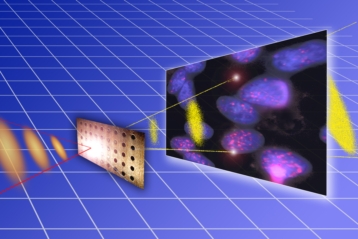Nanosecond Ion Irradiation of Tumor Cells

The chief advantage of ion therapy is the ability to reduce the toxicity associated with its use owing to the advantageous energy deposition properties as compared to the common x-ray or gamma ray therapy. It has been world-widely established with several clinical facilities via the mature conventional technology. However, the number of those clinical facilities is limited owing to the high cost and huge size of the conventional accelerators such as cyclotrons, synchrotrons or linacs. The concept of using laser driven ion acceleration as an alternative for future facility has been attracted significant interest owing to the great potential of reducing the size and cost for ion therapy. In this sense, cell irradiation experiment is recognized as an essential preliminary step to demonstrate the feasibility of the concept as well as visualize the unknown biological effectiveness of ultrashort-pulsed ion beams driven by the ultra-intense laser pulse. As the first benchmark, we have demonstrated for the first time a very compact laser-driven accelerator prototype with a table-top high power laser system, including all the necessary components for future application as the ion acceleration, transport and delivery. A truly nanosecond quasi-monoenergetic proton bunch with extremely high pulse dose up to 7 Gy was achieved and delivered to living human cervical cancer cells (HeLa). The biological response shows no significant difference with conventional sources via the relative biological effectiveness (RBE) measurements. It qualitatively confirms for future medical application the applicability of laser driven ion bunch with ns duration and high pulse dose of few Gy. Furthermore, the advanced design of the system offers the possibility of high repetition operation mode (∼10 Hz) as well as the accessibility of sub-ns biological studies in the low ion energy range of a few MeV. As the next step, with the prospect of new upgrade laser system (6 J in LEX and 60 J in CALA), we believe that it will be possible to adapt our prototype system towards more clinically relevant ion sources in the near future, i.e, 10 MeV/nucleon for LEX and 100 MeV/nucleon for CALA.

